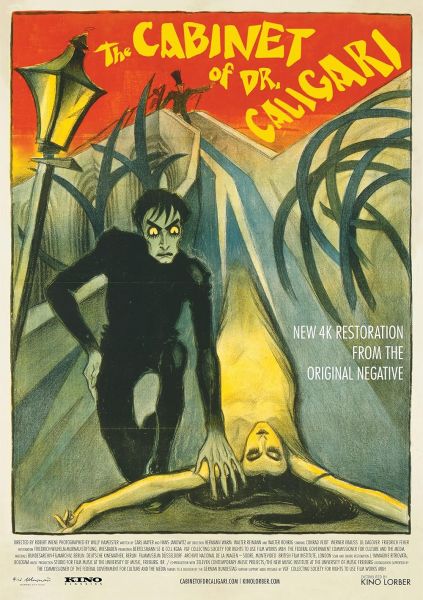The Cabinet of Dr. Caligari

Description:
Adapted from a German stage play, The Cabinet of Dr. Caligari (1920) is a landmark silent horror film that helped define German Expressionism. It follows a deranged hypnotist, Dr. Caligari, and his silent, ominous somnambulist Cesare as murders terrorize a small town. With jagged, painted sets, stark shadows, and misaligned perspectives, the film creates a feverish sense of control, paranoia, and dreamlike unreliability, influencing cinematic style and narrative technique for generations.Keywords:
Hypnosis, German Expressionism, Silent Film, Horror, Psychological Thriller, Early CinemaWhat is the significance of The Cabinet of Dr. Caligari?
"The Cabinet of Dr. Caligari," released in 1920, is a landmark in cinema, renowned for its expressionist style and psychological themes. It explores issues of authority, madness, and the nature of reality, reflecting post-World War I anxieties in Germany. The film's distinctive visual design, characterized by stark, angular sets and dramatic shadows, enhances its surreal atmosphere. As one of the first horror films and a key example of silent cinema, it has influenced countless filmmakers and continues to be studied for its innovative storytelling and visual techniques.
Is The Cabinet of Dr. Caligari the first horror movie?
"The Cabinet of Dr. Caligari," released in 1920, is often regarded as one of the first horror films and a landmark in German Expressionist cinema. Directed by Robert Wiene, it features themes of madness, authority, and psychological horror, presented through its distinctive visual style and narrative structure. While it may not be the very first horror film (as earlier examples exist from the silent era), it significantly influenced the genre and is pivotal in establishing horror as a prominent cinematic form.
Is The Cabinet of Dr. Caligari a silent film?
Yes, "The Cabinet of Dr. Caligari" is a silent film, released in 1920. Directed by Robert Wiene, it is a landmark of German Expressionist cinema, known for its innovative set design and visual style. The film tells the story of Dr. Caligari, who uses a somnambulist named Cesare to commit murders. Its influence on the horror genre and film aesthetics is profound, making it a classic in cinematic history. The film is accompanied by a musical score in most modern screenings, but it was originally presented without synchronized sound.
What is the twist in The Cabinet of Dr. Caligari?
In "The Cabinet of Dr. Caligari," the twist reveals that the entire narrative is a delusion of the protagonist, Francis. Throughout the film, he recounts the tale of Dr. Caligari and his somnambulist, Cesare, who commit murders in a small town. However, it is ultimately revealed that Francis is a patient in a mental asylum, and the events he described are manifestations of his own disturbed mind. This twist raises questions about reality and perception, highlighting themes of madness and authority.
Explore More Categories:
Indie Film Music Culture Quest Cult High School French Cinema Cyclicality Historical Drama New York City Alien British Cinema Science Fiction Women Immaturity Architecture Manipulation Star Wars Unrequited Love Prophecy Totalitarianism Relationships Vampirism Watergate Scandal Existentialism Classic Hollywood